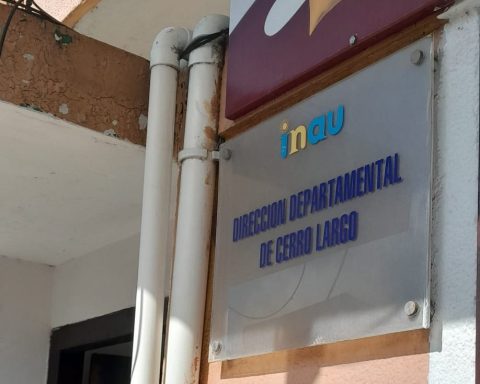Last week the OECD published one of its flagship biannual reports, the OECD Economic Outlook. The report highlights the challenging international context in which we find ourselves.
The war in Ukraine is slowing down the global economy, with growth forecast at just 3% in 2022 (4.5% forecast in December) and 2.75% for 2023. Commodity prices have risen sharply, which has been added to the inflationary pressures already existing everywhere. At the same time, the lockdowns in China, coupled with the war, are prolonging disruptions to global trade and supply chains. Global consumer price inflation is forecast to hit around 9% in 2022, double what was expected last December. Core inflation will remain above targets in most major economies at the end of 2023, despite the normalization of monetary policy.
One of the report’s main messages is that limiting Russia’s ability to finance the war, as is intended by an embargo on Russian oil exports, is essential to hastening an end to this devastating conflict. But in the meantime, efforts must be made to minimize the humanitarian, economic and social consequences. The first urgency is to avoid a food crisis and for this, global cooperation is necessary to ensure that food reaches consumers at affordable prices, particularly in low-income economies. The tasks of the agricultural campaign (such as the planting of crops or the availability of fertilizers) must be facilitated, cooperating at the international level in the logistics of shipment and distribution to the countries in need, and not repeating the failures in the global distribution of vaccines during the pandemic.
Another message is that the war has made it clearer than ever that energy security and climate change mitigation are intertwined. The answer must focus on the transition to cleaner energy consumption and avoid the search for alternative sources within fossil fuels or, worse still, the increase in the use of coal. And this green transition will require deeper and more resilient global value chains, more not less global trade.
Turning to Latin America, after a stronger-than-expected rebound in 2021, Latin America’s economic recovery is slowing. The region risks falling behind in the coming years, compromising convergence towards higher living standards. Thus, the OECD expects that growth in six Latin American countries, which cover around 85% of the region’s GDP (four member countries: Chile, Colombia, Costa Rica and Mexico, and Argentina and Brazil on the way to soon to be added by Peru), is around 2% (weighted average) this year and 1.6% next year (see table). As for inflation, the outlook has been revised upwards in all countries, and is expected to be above the Central Banks’ targets, despite the aggressive normalization of monetary policies being carried out in several of these countries.
Putting Uruguay in this context, the economy is going to grow above the region, around 4% this year and 3% next year, according to CINVE projections. The impact of the war in Ukraine is limited as the negative impact on the Uruguayan economy from high oil prices is expected to be more than offset by the positive effects of high prices for agricultural products, the main export products. Inflation is expected to moderate somewhat next year, but to remain above 7%, while two-year inflation expectations are close to 8%. In any case, Uruguay has a long-standing high inflation problem, if you compare it with the 5 countries in the region of the table (excluding Argentina).
Source: OECD Economic Outlook Vol. 111, June 2022 database and cinve for Uruguay.
Note: Inflation figures correspond to annual average. The regional averages shown for GDP are PPP-weighted averages, while for inflation they are simple averages.
Uncertainty around these prospects is high, and there are notable risks. The first is related to the normalization of monetary policy in advanced economies. In principle, the rise in interest rates has been widely anticipated and therefore should not cause any major shock. However, if central banks in advanced countries (particularly the US) are forced to raise interest rates at a faster pace, market sentiment is likely to shift sharply, leading to a sudden correction in bond prices. assets and flight, or less inflow, of capital in the region, and possibly in Uruguay. In turn, this can lead to significant currency depreciation in the region and volatility, especially in economies that rely heavily on external financing. Another important risk on the horizon is the evolution of the Chinese economy, since a more pronounced slowdown could affect the prices and exports of some countries in the region, including Uruguay. The effects of the war in Ukraine could be even greater than anticipated, for example due to a Europe-wide abrupt stoppage of gas flows from Russia, further increases in commodity prices, or further disruptions in global supply chains.
Additionally, the countries of the region emerge from the pandemic with high public debt and limited fiscal space. And Uruguay is not exempt. This implies that, in the face of sudden rises in international interest rates, the regular renewal of the debt may become more difficult. But in addition to this, it becomes more difficult to meet social or public investment needs, such as education or infrastructure, and other reforms that favor growth, at a time when it is imperative to increase productivity and potential growth.
It’s not all bad news. This context could bring opportunities in the region, and therefore also in Uruguay. These derive from the higher prices of raw materials, whose tax revenues must be used wisely, or from expanding production where there is now a shortage of products, such as cereals or oilseeds, where the region has potential. Also in the current context there are opportunities to nearshoring either friendshoring, that is, decisions to relocate production to countries that agree with a set of norms and values on how to operate in the world economy. The region should take advantage to attract the reallocation of foreign investment and promote the deepening of value chains. But to take advantage of these opportunities, it is essential to eliminate existing barriers to trade, address deficiencies in infrastructure (which make logistics costs high), tariff rates and other non-tariff barriers that still exist, or even the lack of labor. qualified. Of course, this is not resolved overnight, but it is certainly the way to go.
Other priorities in this international context will be to compensate vulnerable households for the increase in energy and food prices, since they are the most affected by the negative impacts, and thus avoid increases in poverty. Targeted measures, such as cash transfers, are the best option, while clear strategies for the sustainability of public finances are developed. To this end, fiscal policy frameworks must be strengthened and fiscal consolidation must continue. But how this consolidation takes place, both in terms of size and composition, will be key. It will be important to safeguard public investment to underpin economic growth, address social needs and pay increasing attention to environmental policies to ensure a clean energy transition. Finally, central banks should continue to monitor the situation and be willing to continue raising interest rates to avoid de-anchoring inflation expectations.
_____________
Paula Garda has a PhD in Economics from Pompeu Fabra University, Barcelona. She is a senior economist at the OECD Economics Department and a research associate at CINVE. Opinions are my own and do not necessarily represent the point of view of the OECD. Post written for the CINVE SUMA Blog www.suma.org.uy
Twitter: @BlogSUMAuy
Source link
















